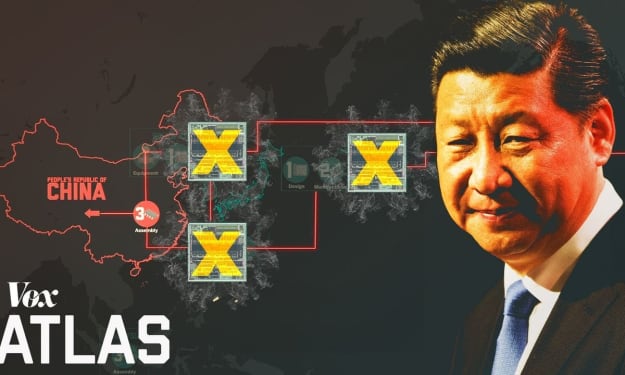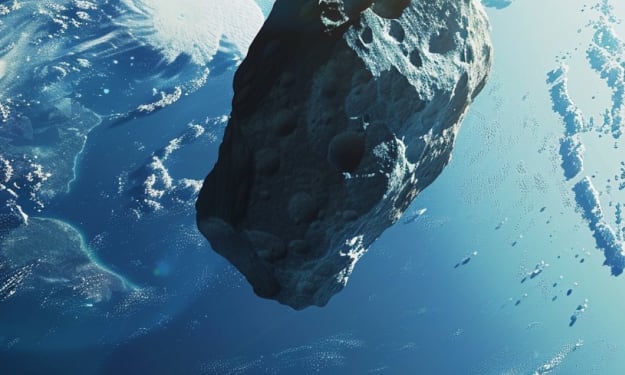How researchers hack bacteria to dye blue jeans
A modern innovation with bacteria

The vast majority of us can't envision looking through our storage room and not seeing a couple of these, blue Jeans. you have the thin trendy person kind, boot cuts, father pants, no judgment. One thing that pretty much our pants share for all intents and purposes is all that blue part, the indigo color. Tragically, the color we use today is really grimy. What's more, since we make a great deal, and I mean, truly a ton of pants, that one cycle has an effect, yet certain individuals are reevaluating the manner in which we make the indigo color. So later on, our pants may very well be a little more clean. I'd wear this. I believe I'm wearing this at the present time. Truth be told. Pants are notable, just so everyone has them in their wardrobe. In this way, I feel for that reason they're an extraordinary contextual analysis. The fact that billions of matches make reliably, it assessed of pants are made, and to give them that notorious blue shade, north of 70,000 tons of indigo are delivered too, and that indigo is really key to that exemplary blurred look. That makes pants so incredible in light of the fact that like as you wear pants, this falls off, and you get this like lovely blurring. Thus, that is the reason you can utilize indigo.
There are really two sorts of indigo colors that can create that blur, regular and manufactured. People have been utilizing the regular stuff that comes from Indigofera plants for 1,000s of years. However, in 1897, German scientists designed and manufactured indigo color for modern scale creation. Nowadays, practically all qualities are colored with manufactured indigo color. Synthetically, it's indistinguishable from plant-based indigo color. Thus, the finished result is something similar, however, the creation interaction requires a frightful blend of non-renewable energy sources and poisonous materials, similar to formaldehyde, hydrogen cyanide, aniline, and sodium amide. The issue happens when you utilize manufactured indigo color to color a great many pants.
We should color some texture. In this way, the perishing system utilizes many synthetics. You have the indigo color itself, however, at that point, you likewise have added substances, which permit the indigo to break down in water. For our situation, we're utilizing soft drink debris and sodium hydrosulfite, which our perishing unit simply says, might be hurtful whenever abused. So on a modern scale, these added substances can be unsafe to individuals working in material manufacturing plants, particularly on the off chance that the production line now has nothing to do with spec, or they don't approach PPE. Substance openness has been connected to respiratory issues, skin issues, and, surprisingly, a few malignant growths in material specialists. Thus, I'm not in a material plant, but rather it is blustery, and preferred to be protected over grieved.
After a couple of plunges, we want to flush off every one of the synthetic substances with simply some spotless water here. Be that as it may, not all pants are made similarly, a few completed items can contain pollutants like formaldehyde and aniline. Along these lines, presently we completed the process of kicking the bucket everything. We should simply securely discard this by washing it straight away forever. This is only a five-gallon pail, yet however much 280,000 tons of material colors end up as wastewater every year, and not every last bit of it is discarded appropriately, particularly where there aren't great natural securities or the business is unregulated. Assuming you go to any industrial facility in urban communities delivering these material items, the waterways are dark from the discharge emerging from these processing plants. That wastewater can mess up sea-going environments, contaminate drinking water, and even end up in food become close by. Furthermore, I realize that a ton of denim laundries, and denim brands they're expecting some kind of development where they can get away from manufactured indigo. In any case, it's not all awful information, there are heaps of endeavors to further develop this cycle start to finish from water decrease to more secure completing procedures, and one organization is focusing on that blue variety that we as a whole love.
Thus, this is a standard sort of sub-atomic science lab. This is where we do a lot of our sorts of reordering of DNA to place it into our microbial host. Huue is an organization that makes indigo color from sugar rather than petroleum products. They start with an indigo plant and group the DNA for indigo mixtures. That hereditary code gets customized into organisms, which then produce those precise indigo atoms. What's more, you can sort of see that some of them are delivering a ton of dim blue tones, and some of them are creating significantly less, thus you Whichever strains are performing best, get placed in a shaker flagon to multiply. Those societies develop until there's sufficient to go into a bioreactor. In every one of these reactors, we have either an alternate type of our microorganism or a similar strain with various sorts of media conditions or development conditions. We have some control over things like how quickly they're mixing and how much oxygen is going into the stock. The colors are then broken down and cleaned before the testing stage. Thus, after the microorganisms have sort of developed and delivered the indigo color, it's still sort of this combination of microscopic organisms, and color, and the media that it's really been filled in. We work on sanitizing out the color and ensuring that the last color stuff is precisely the exact thing an engineered indigo client would anticipate.
Huue is still especially in the Research and development stage. It's additionally by all accounts not the only group attempting to tackle this issue. DyStar, one of the main makers of manufactured indigo, has made its bite the dust more secure for laborers and simpler to clean. Others have made indigo liberated from explicit impurities like aniline. Huue is beginning with indigo, yet their sights are set much higher. How would we truly make that effect into the design business by truly following the 70 to 80,000 metric lots of indigo that are made consistently, and afterward past that a large number of metric lots of different colors and colorants that are utilized in such countless different enterprises? Thus, our genuine concentration right presently is truly placing our answer into the full modern assembling scales so we can begin to convey material into the style business, and ideally, be in everybody's next sets of pants. Indigo is just a single part, but a gigantic one, in the monstrous production network that produces billions of pants every year. A world's generally stowed away from buyers.
I think we, as a general public, would truly benefit, similar to each shopper, would profit from simply having somewhat more mindfulness about the materials that are going into our garments similarly that individuals focus on what fixings go into the food that we devour. I think this is the very same. Obviously, organizations and controllers play a part as well, and there are willful endeavors to dispose of perilous synthetic compounds from clothing fabricating.
About the Creator
Pelumi Emmanuel
freelancer, a degree holder,
Counselor, public speaker and sports enthusiast....





Comments
There are no comments for this story
Be the first to respond and start the conversation.